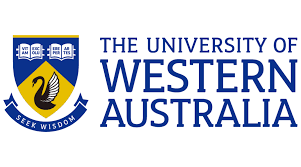University of Western Australia: EZONE boosts online learning capability
The University of Western Australia’s EZONE student hub was officially launched last night with foundation partners BHP and Woodside.
The collaborative learning and research space was guided and inspired by local Noongar traditions of learning on Country.
The University acknowledged the generous support and funding made possible through the bequest from alumnus Robert Telford, Eastwood Family Foundation, Harold and Margaret Clough and Giumelli Family Foundation as well as many other donors and alumni.
The Hon. Don Punch MLA, Minister for Innovation, said a significant part of Western Australia’s economic future rested on innovative collaboration between universities and industry.
“It is great to see this crystallised in the transformational new EZONE facility,” Mr Punch said.
UWA Vice-Chancellor Professor Amit Chakma thanked the staff, students, contractors and partners who contributed to the EZONE project.
“This new EZONE building is a monument to the hard work, dedication and ingenuity of the UWA community. When we pull together, the sky is the limit,” Professor Chakma said.
Associate Dean of Engineering and Mathematical Sciences (Learning and Teaching) Associate Professor Dianne Hesterman said EZONE’s facilities had been well-placed to adapt to online learning due to Covid-19.
“The video-conferencing facilities in some of the learning studios and meeting rooms have allowed students unable to join us in Perth or on campus to still participate in classes, network with peers and continue their studies,” Associate Professor Hesterman said.
“The EZONE has proven to be an excellent facility for face to face, online, and hybrid teaching modes. It is also supporting the adoption of emerging pedagogies that require good digital infrastructure and reconfigurable learning spaces.”
EZONE represents an $80 million investment in the future of STEM education and research in WA, housing three world-class engineering laboratories, 14 flexible learning studios, social and study space for coursework students, and a dedicated space for 150 research students working with resources and other industries.
In addition to the work of UWA design, architecture and engineering students, the project created more than 80 full-time construction jobs for the duration of the 23-month build period. Designed by Hassell and built by Perkins, EZONE is competing in the educational category of the 2021 WA Architecture Awards.
EZONE has been well used since completion, with more than 1,200 extra-curricular events held in the space – 500 were student-led activities, enabling students to shape their own campus experience.
Associate Professor Hesterman said at least a quarter of these activities involved industry partners.
“The EZONE is called a student hub, but it was designed also as a collaborative space,” she said.
“It enables our students, staff, and industry partners to come together and collaborate on the big challenges that we face and to work on socially responsible and sustainable solutions.
“Our industry partners have helped us with events such as addressing the post-Covid employment market, they’ve worked on case studies with our students, and helped shape the University’s engineering specialisations and new programs.”
Meath Hammond, BHP Acting Vice President Corporate Affairs, Minerals Australia said BHP was proud to be a Foundation Partner of UWA EZONE – a new approach to cross-disciplinary education and research.
“We contributed $12 million towards the state-of-the-art education facility that will combine the talent, technology and equipment required in WA to make a real and lasting difference to our industry,” Mr Hammond said. “It’s fantastic to help make EZONE a reality – the single largest investment in engineering education in WA’s history.”
Woodside Executive Vice President Sustainability Shaun Gregory said the company’s investment in EZONE was ultimately an investment in people.
“One thing Covid-19 underscored was the role of people in creating a sense of place. Our collective investment here at EZONE is really in the learning, growth and connection that we hope the building will bring about,” Mr Gregory said.
EZONE has hosted 50 high school visits including events for Girls in Engineering, Aspire UWA and the Children’s University, as well as schools outreach and equity programs. The building has also supported student wellbeing events from mental wellbeing workshops to ‘stress lesstival’ and soft skills building.
Students have used the meeting spaces to their full capacities enabling them to work together on team projects, support each other in group study sessions, and dream up new ideas and projects together.
More than 70 per cent of EZONE users have spent more time on campus since the building opened and 80 per cent of students have spent more time studying in groups since EZONE became our new student hub.
The EZONE UWA Indigenous recognition naming framework, developed by Dr Richard Walley from UWA’s School of Indigenous Studies, incorporates knowledge shared by Whadjuk Noongar Elders about animals native to Matilda Bay.
These are organised according to the vertical organisation of their habitats to align water, land and sky animals to the naming strategy.
Dr Walley said the main rooms on the top floor were named after native birds, while the floor below had the names of tree-climbing reptiles and the ground floor was named after water and land-based animals.
“A cultural narrative from the local area has been utilised in this project,” he said.

